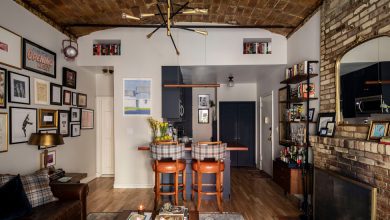School Is for Everyone

For the majority of human history, most people didn’t go to school. Formal education was a privilege for the Alexander the Greats of the world, who could hire Aristotles as private tutors.
Starting in the mid-19th century, the United States began to establish truly universal, compulsory education. It was a social compact: The state provides public schools that are free and open to all. And children, for most of their childhood, are required to receive an education. Today, nine out of 10 do so in public schools.
To an astonishing degree, one person, Horace Mann, the nation’s first state secretary of education, forged this reciprocal commitment. The Constitution doesn’t mention education. In Southern colonies, rich white children had tutors or were sent overseas to learn. Teaching enslaved people to read was outlawed. Those who learned did so by luck, in defiance or in secret.
But Mann came from Massachusetts, the birthplace of the “common school” in the 1600s, where schoolmasters were paid by taking up a collection from each group of households. Mann expanded on that tradition. He crossed the state on horseback to visit every schoolhouse, finding mostly neglected, drafty old wrecks. He championed schools as the crucible of democracy — his guiding principle, following Thomas Jefferson, was that citizens may not sustain both ignorance and freedom.
An essential part of Mann’s vision was that public schools should be for everyone, and that children of different class backgrounds should learn together. He pushed to draw wealthier students away from private schools, establish “normal schools” to train teachers (primarily women), have the state take over charitable schools and increase taxes to pay for it all.
He largely succeeded. By the early 20th century all states had free primary schools, underwritten by taxpayers, that students were required to attend.
And that’s more or less how America became the nation we recognize today. The United States soon boasted one of the world’s highest literacy rates among white people. It is hard to imagine how we could have established our industrial and scientific might, welcomed newcomers from all over the world, knit our democracy back together after the Civil War and become a wealthy nation with high living standards without schoolhouses.
The consensus on schooling has never been perfect. Private schools older than the nation continue to draw the elite. Public schools in many parts of the country were segregated by law until the mid-20th century, and they remain racially and economically segregated to this day.
But Mann’s inclusive vision is under particular threat right now. Extended school closures during the coronavirus pandemic effectively broke the social compact of universal, compulsory schooling.
School closures threw our country back into the educational atomization that characterized the pre-Mann era. Wealthy parents hired tutors for their children; others opted for private and religious schools that reopened sooner; some had no choice but to leave their children alone in the house all day or send them to work for wages while the schoolhouse doors were closed.
Students left public schools at a record rate and are still leaving, particularly in the blue states and cities that kept schools closed longer. The test score gaps between rich and poor students, and between white, Black and Hispanic students, are wider than before. Home-schooling is on the rise, private schools have gained students and an unknown number have dropped out altogether — Los Angeles said up to 50,000 students were absent on the first day of class this year. Teachers are expressing intense burnout and schools have many staff vacancies.
Meanwhile, a well-funded, decades-old movement that wants to do away with public school as we know it is in ascendance.
This movement rejects Mann’s vision that schools should be the common ground where a diverse society discovers how to live together. Instead it believes families should educate their children however they wish, or however they can. It sees no problem with Republican schools for Republican students, Black schools for Black students, Christian schools for Christian students, and so on, as long as those schools are freely chosen. Recent Supreme Court decisions open the door to both prayer in schools and public funding of religious education, breaking Mann’s nonsectarian ideal.
If we want to renewthe benefits that public schools have brought to America, we need to recommit to the vision Mann advocated. Our democracy sprouts in the nursery of public schools — where students grapple together with our messy history and learn to negotiate differences of race, class, gender and sexual orientation. Freedom of thought will wilt if schools foist religious doctrine of any kind onto students. And schools need to be enrichedplaces, full of caring adults who have the support and resources they need to teach effectively.
Without public education delivered as a public good, the asylum seeker in detention, the teenager in jail, not to mention millions of children growing up in poverty, will have no realistic way to get the instruction they need to participate in democracy or support themselves. And students of privilegewill stay confined in their bubbles. Americans will lose the most powerful social innovation that helps us construct a common reality and try, imperfectly, to understand one another.
It’s a testament to the success of our schools that it took the pandemic shutdowns for many people to see all theessential roles they play in society. The length of these closures made the United States an outlier among other wealthy nations. They forced Americans to ask themselves: What is school for?
For Melissa Henderson, a single mother of five in Georgia, school was a safe place for her kids. With schools and day cares closed in May 2020, she left her 14-year-old daughter in charge of her younger siblings. Ms. Henderson was arrested and charged with reckless conduct.
For Alexis, a 10-year-old on Maui, school was a place to be with her friends. She has a rare genetic condition and is autistic. When schools closed, she went from a “happy, bubbly, loving-life child” to “flat and empty and not really there — like a robot,” said her mother, Vanessa Ince. Alexis regressed from walking to crawling, went back to wearing diapers and stopped using a communication device.
For Osvaldo Rivas Santiago, a 15-year-old growing up in foster care in Vancouver, Wash., school was where he set goals for himself and excelled. He had trouble willing himself to stay focused with remote learning.
“It impacts your motivation,” he told me. “You tend to not really care about school at all.”
The shutdowns reminded Americans that schools provide vital services besides learning. Randi Weingarten, president of the American Federation of Teachers, slammed “people who saw teachers as glorified babysitters” before the pandemic. But the fact is, public school isthe nation’s major source of free child care for working families. Moreover, tens of millions of children depend on school for meals, safety, special education services and therapies, and English language learning.
They are also hubs of community togetherness.
I live around the corner from my daughter’s public elementary school in Brooklyn, a sprawling brick building dating to 1895. At the start of the pandemic, the cheerful daily rush of cargo bikes, scooters and children walking to school gave way to an eerie silence punctuated by the howl of ambulances.
Without the ability to meet in person regularly, some neighborly relationships curdled. Someone removed the schoolyard’s Black Lives Matter and Pride flags, and suspicions flew. Here and across the country, school board and P.T.A. meetings moved online, and sometimes stretched into the wee hours of the night as parents yelled themselves hoarse over reopening protocols and varying responses to the nation’s racial upheaval.
Some Americans missed schools when they were closed, and others distanced themselves. The extended blue state closures were a failure on the part of Democrats, who have historically been the party that Americans trust over Republicans when it comes to education. That trust eroded during the pandemic, as many Democratic governors and mayors seemed unable to balance families’ needs with fears of a deadly virus. Today, the few union leaders and other educators who have impugned or outright denied the existence of learning loss are coming pretty close to arguing that public schools accomplish nothing. If being at home for a year and a half didn’t have any negative impact on children, why do we need school?
All of this emboldened a movement on the right that has for more than half a century sought to dismantle public education and the idea that Americans from diverse backgrounds should learn alongside one another.
Corey DeAngelis, a fellow at the libertarian Cato Institute, told me that “the teachers unions’ influence on keeping the schools closed for so long” opened the door to expanded alternatives. His dream is a universal voucher program, where taxpayer funds are parceled out directly to families to spend as they wish, with no public school “monopoly.” Meaning, no collectively funded infrastructure to provide education as a public good.
This dream began, more or less, in 1955, when the University of Chicago’s Milton Friedman published the first manifesto arguing for school vouchers to replace publicly administered education. James McGill Buchanan, a University of Chicago-trained economist teaching at the University of Virginia, took the argument further by seizing on the era’s post-Brown v. Board of Education segregationist fervor. As Nancy MacLean summarizes in “Democracy in Chains,” her acclaimed but polarizing 2017 intellectual history of the right in America, Buchanan intuitedthat if rich white people could be convinced that they were justified in no longer paying for public schools, it opened the door to resist all taxation, all public goods. And he supplied that justification. He came to argue that it was anti-liberty to force people of wealth, a minority, to ante up for goods enjoyed by the majority.
What was called “massive resistance” to integration was so strong that some places in the South chose to close public schools altogether rather than see them integrated. In the fall of 1957, President Eisenhower called in the 101st Airborne to protect the Little Rock Nine. The next year, the Arkansas legislature and the governor tried to block desegregation by closing Little Rock’s four public high schools, Black and white, entirely. It became known as the Lost Year. In Prince Edward County, Virginia, officials went even further, closing the schools from 1959 all the way to 1964, while providing private schooling to white children.
This was an outright rejection of Mann’s ideal that Americans should be educated at public schools that serve everyone. And the mark of that rejection remains to this day. Throughout the South, white children attend private schools that began as so-called segregation academies during the civil rights era, while many Black children attend the hollowed-out public schools that white students left behind. And elsewherethe pattern is repeated — in fact, schools in the Northeast are among the most segregatedin the country.
The movement Friedman and Buchanan encouraged lives on. Opposition to public education, and the promotion of alternatives like vouchers and for-profit schools, has attracted Catholics long devoted to parochial schools, evangelical Christiansand other religious groups, cultural conservatives, corporate capitalists and libertarians. Today they are joined by the millionaires and billionaires who see K-12 education as another sector ripe for disruption.
In other words, the core constituencies of today’s Republican Party, otherwise seemingly so disparate, unite over this one issue. Their shared agenda is to privatize and defund schools.
This movement could have no better avatar than Betsy DeVos, who had never taught in, attended or sent her children to a public school before President Donald Trump named her secretary of education. “I personally think the Department of Education should not exist,” she said in July.
During the pandemic, Ms. DeVos diverted a disproportionate share of federal relief funds to private schools until a judge declared her actions illegal. She proposed a federal school voucher program.
And she declined to direct the Department of Education to track school reopening plans or Covid mitigation strategies, abdicating responsibility for helping districts reopen safely, even as the Trump administration called for them to reopen at any cost. Her approach signaled exactly what the agenda will be if Republicans regain control of the federal government.
And though Mr. Trump is out of office (for now), and Ms. DeVos with him, the Supreme Court justices the former president nominated have opened the door to both prayer in public schools and the public funding of religious schools. Right-wing donors, many of whom have long histories of opposing public education, have backed the activists whipping up a fervor over the treatment of race and queer and trans rights in the classroom. In the eyes of conservative activists, public education is the enemy of the people, alongside the deep state and the mainstream media, and they are working hard to make the American people believe it too.
Mann’s vision of public schools is at stake right now. Not only his vision of school as the great equalizer, the place where disadvantaged groups gain access to social and economic capital, which is important enough, but also his view of school as the place where Americans can give up ignorance in exchange for freedom.
This country has seemingly never had a harder time embracing a shared reality or believing in common values. The parents who are showing up at school boards yelling about “critical race theory” and pronouns are trying to get public schools to bend history, reality and values to their liking. I disagree with them vehemently, but I also want them to stay in the argument. It would be far worse if these parents went home and created their own schools. Because their children would then grow up with one set of unchallenged beliefs, while my children and the children of like-minded people would grow up with another — emerging as adults who have no hope of understanding one another, much less living together peacefully.
If we lose public education, flawed as it is, the foundations of our democracy will slip. Not only the shared knowledge base but also the skills of citizenship itself: communication, empathy, and compromise across differences.
I grew up Jewish in the Bible Belt, studious and serious. My Christian classmates sometimes taunted me that I was going to hell.
I can only imagine how I would have felt if my teachers had openly agreed. If my textbooks were full of conspiracy theories about “globalists” and Jewish space lasers. If I — and my friends who were Jain or Buddhist — had to choose between attending a school that conformed to the majority of our neighbors’ religious beliefs and staying home.
As it was, it was hard to be singled out. But that experience of difference helped me connect with Creole children, and those whose families came from Sri Lanka, Costa Rica, Taiwan, India, Nigeria — brought to the land of football and po’ boys by the oil industry and jobs at Louisiana State University. And some of my closest friends were from white, churchgoing families too. We did the Cajun two-step, lined up for the geography bee and learned to be together, imperfectly, in this ever-various country.
Anya Kamenetz (@anya1anya) is a longtime education reporter and the author of “The Stolen Year: How Covid Changed Children’s Lives, and Where We Go Now,” from which this essay is adapted.
The Times is committed to publishing a diversity of letters to the editor. We’d like to hear what you think about this or any of our articles. Here are some tips. And here’s our email: [email protected].
Follow The New York Times Opinion section on Facebook, Twitter (@NYTopinion) and Instagram.




